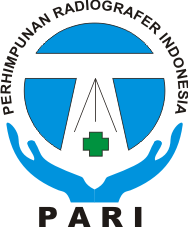Pengaturan Tempat Tinggal Dan Kondisi Perumahan Terhadap Keluhan Kesehatan Lansia
Abstract
Keywords
Full Text:
PDFReferences
Adioetomo, S. M., Cicih, Lilis, H.M., & Toersilaningsih, S. (2018). Menjadi Lansia: Antara Anugerah dan Tantangan. Dalam Adioetomo, Sri M. & Pardede, Elda L. Memetik Bonus Demografi: Membangun Manusia Sejak Dini. Depok: PT Raja Grafindo Persada
Alaazi, D. A., Stafinski, T., Evans, J., Hodgins, S., Oteng-ababio, M., Menon, D., & Lane, A. P. (2021). “ Our Home Is a Muddy Structure ”: Perceptions of Housing and Health Risks Among Older Adults in Contrasting Neighborhoods in Ghana. Frontiers in Public Health, 9(April), 1–11. https://doi.org/10.3389/fpubh.2021.650861
Alabi, A. M., & Fatusin, A. F. (2018). Housing Condition and Health of the Aged in the Core Area of IWO, Nigeria. Analele Universităţii Din Oradea, Seria Geografie, 28(2), 174–184. http://istgeorelint.uoradea.ro/Reviste/Anale/Art/2018-2/4.AUOG_763_Alabi.pdf
Badan Pusat Statistik (BPS). (2022a). Konsep dan Definisi Susenas Maret 2022. Jakarta: BPS.
Badan Pusat Statistik (BPS). (2022b). Statistik Penduduk Lanjut Usia 2022. Jakarta: BPS.
Badan Pusat Statistik (BPS). (2023). Proyeksi Penduduk Indonesia 2020-2050: Hasil Sensus Penduduk 2020. Jakarta: BPS.
Bolina, A. F., Araújo, M. da C., Haas, V. J., & Tavares, D. M. (2021). Association between Living Arrangement and Quality of Life for Older Adults in the Community. Revista Latino-Americana de Enfermagem. https://doi.org/10.1590/1518-8345.4051.3401
ESCAP. (2022). Asia-Pacific Report on Population Ageing 2022. In United Nations Publication.
Fonta, C. L., Nonvignon, J., Aikins, M., Nwosu, E., & Aryeetey, G. C. (2017). Predictors of Self-Reported Health Among the Elderly in Ghana : a Cross Sectional Study. 1–15. https://doi.org/10.1186/s12877-017-0560-y
Jennifer, H. G., & Bagavandas, M. (2020). Determinants of Depression Status of Elderly in Kancheepuram District: A Community Based Neighborhood Study. Indian Journal of Public Health Research & Development, 11(7), 1209–1214. https://doi.org/10.37506/ijphrd.v11i7.10261
Kandapan, B., Pradhan, J., & Pradhan, I. (2023). Living Arrangement of Indian Elderly : a Predominant Predictor of Their Level of Life Satisfaction. BMC Geriatrics, 1–14. https://doi.org/10.1186/s12877-023-03791-8
Lorem, G., Cook, S., Leon, D. A., Emaus, N., & Schirmer, H. (2020). Self-Reported Health as a Predictor of Mortality: A Cohort Study of Its Relation to Other Health Measurements and Observation Time. Scientific Reports, 10(1), 1–9. https://doi.org/10.1038/s41598-020-61603-0
Negrini, E. L., Nascimento, C. F., Silva, A., & Antunes, J. L. (2018). Elderly Persons who Live Alone in Brazil and Their Lifestyle. Rev. Bras. Geriatr. Gerontol., Rio de Janeiro, 21(5), 523–531. https://doi.org/http://dx.doi.org/10.1590/1981-22562018021.180101
Noguchi, T., Nojima, I., Inoue-Hirakawa, T., & Sugiura, H. (2021). Role of Non–Face-to-Face Social Contacts in Moderating the Association Between Living Alone and Mental Health Among Community-Dwelling Older Adults: a Cross-Sectional Study. Public Health, 194, 25–28. https://doi.org/10.1016/j.puhe.2021.02.016
Santhalingam, S., Sivagurunathan, S., & Prathapan, S. (2022). The Effect of Socioeconomic Factors on Quality of Life of Elderly in Jaffna District of Sri Lanka. Plos Global Public Health, 1–14. https://doi.org/10.1371/journal.pgph.0000916
Simiyu, S., Bagayoko, M., & Gyasi, R. M. (2021). Associations between Water, Sanitation, and Depression Among Older People in Ghana: Empirical Evidence from WHO-SAGE Wave 2 Survey. Aging and Mental Health, 1–8. https://doi.org/10.1080/13607863.2021.1910796
Srugo, S. A., Jiang, Y., & de Groh, M. (2020). Living Arrangements and Health Status of Seniors in the 2018 Canadian Community Health Survey. Health Promotion and Chronic Disease Prevention in Canada, 40(1), 18–22. https://doi.org/10.24095/hpcdp.40.1.03
Súilleabháin, P. S. O., Gallagher, S., & Steptoe, A. (2019). Loneliness , Living Alone , and All-Cause Mortality : The Role of Emotional and Social Loneliness in the Elderly During 19 Years of Follow-Up. Psychosomatic Medicin, 81, 521–526. https://doi.org/10.1097/PSY.0000000000000710
United Nations Department of Economic and Social Affairs (UN DESA). (2020). World Population Ageing 2020.
Wijayanti, W., Pratomo, D. S., & Khusaini, M. (2018). The Effects of Socio-Economic Factors on Health of Elderly in East Java Windi Wijay. Scientific Annals of Economics and Business, De Gruyter, 65(2), 205–213. https://doi.org/10.2478/saeb-2018-0011
World Health Organization (WHO). (2018). WHO Housing and Health Guidelines. http://www.who.int/phe%0Ahttp://apps.who.int/bookorders.
Yan, L., Huimin, X., Xiuyan, L., Shuangshuang, W., & Shaoshao, B. (2020). Living Arrangements and Life Satisfaction : Mediation by Social Support and Meaning in Life. 20(136), 1–8. https://doi.org/https://doi.org/10.1186/s12877-020-01541-8
Yao, Y., Zhang, S., & Li, A. (2022). Effects of Educational Attainment and Housing Condition on Self-Rated Health in Old Age : Heterogeneity and Tendency in China. Frontiers in Public Health, 9(January), 1–10. https://doi.org/10.3389/fpubh.2021.774364
Zhou, Z., Zhou, Z., Gao, J., Lai, S., & Chen, G. (2018). Urban-Rural Difference in the Associations Between Living Arrangements and the Health-Related Quality of Life (HRQOL) of the Elderly in China—Evidence from Shaanxi Province. PLoS ONE, 13(9), 1–15. https://doi.org/10.1371/journal.pone.0204118
DOI: https://doi.org/10.31983/link.v20i1.10425
Article Metrics
Refbacks
- There are currently no refbacks.
LINK (ISSN: 1829-5754 e-ISSN: 2461-1077), dipublikasikan oleh Pusat Penelitian dan Pengabdian kepada Masyarakat, Poltekkes Kemenkes Semarang, Jl. Tirto Agung, Pedalangan, Banyumanik, Semarang, Jawa Tengah 50268, Indonesia; Telp./Fax: (024)7460274
Public Services :
![]() E-mail: link@poltekkes-smg.ac.id
E-mail: link@poltekkes-smg.ac.id
 LINK is licensed under a Creative Commons Attribution-ShareAlike 4.0 International License
LINK is licensed under a Creative Commons Attribution-ShareAlike 4.0 International License















